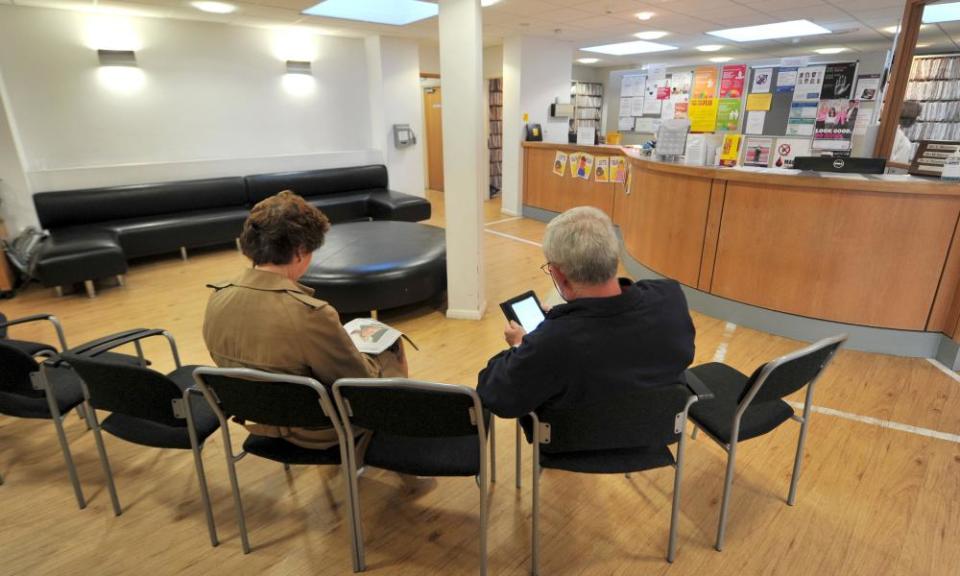Poor lose doctors as wealthy gain them, new figures reveal

Fewer GPs are choosing to work in poorer areas but more are joining surgeries that look after wealthier populations, new official figures reveal.
The exodus, uncovered by Labour MP Frank Field, is exacerbating the existing “under-doctoring” of deprived populations – the lack of family doctors in places where poorer people live.
Experts said the widening divide between rich and poor areas in GP numbers – which is one of England’s starkest health inequalities – would force the least well-off to wait longer for an appointment, even though they are generally sicker and die earlier than the rest of the population.

“A decade ago the country was beginning to make some serious inroads into the under-doctoring of the poorest areas. What these grim figures show is that in recent years that progress has not only stalled, but actually gone into reverse,” Field told the Observer.
“The most worrying trend here is the number of GPs ceasing to serve people towards the bottom of the pile, while at the same time people in the wealthiest areas have benefited from an even better service. Vulnerable people are having to suffer in silence without being able to see a GP.
“Here’s another example of everything going in the wrong direction if our goal is to equalise health opportunities and outcomes. It is a new appalling face of inequality in modern Britain.”
There were 8,207 GPs working in areas containing the most deprived quintile of the population in England in 2008. But by last year that number had fallen to 7,696 – a drop of 511 – according to the response to a written parliamentary question Field asked recently.
But over the same decade the number of family doctors working in the most prosperous fifth of the population increased from 4,058 to 4,192 – a rise of 134, public health minister Steve Brine told Field.
We desperately need more GPs right across the country... People in deprived areas often need more access to GP services
Dr Helen Stokes-Lampard
“These figures show a really disturbing trend, particularly given that low-income areas were already under-doctored before this latest fall took place”, said Norman Lamb, the Liberal Democrat MP and ex-coalition health minister. Ministers needed to create a “patient premium”, modelled on the pupil premium introduced in 2011, to ensure more money reaches surgeries in poorer areas, he added.
Last week it emerged that GP numbers in England had fallen by 542 in the past year, despite a high-profile government pledge in 2015 to increase the workforce by 5,000 by 2020. Patients were facing longer waits for appointments and greater difficulty getting to see their own GP.
“We desperately need more GPs right across the country,” said Dr Helen Stokes-Lampard, chair of the Royal College of GPs.
“But we know that some areas – often more deprived areas, but also rural and some coastal areas – are finding it more difficult than others to recruit.
“The paradox is that people living in deprived areas tend to have a greater number of long-term conditions and more complex needs, and actually they often need more access to general practice services.”
Jeremy Hunt, the health and social care secretary, has recently expanded the number of GPs in the Targeted Enhanced Recruitment Scheme from 200 to 250, under which trainee family doctors are paid £20,000 “golden hellos” in return for starting their career in areas of the country lacking in doctors.
Dr Richard Vautrey, chair of the British Medical Association’s GPs committee, said that the £20,000 payments were helpful, but “only short-term fixes.
“This requires sustained significant investment, enabling all practices to recruit sufficient GPs and other staff,” he added.
GPs in poorer areas are also ending up with bigger caseloads, but their counterparts in wealthy places are not, because there are more of them.
The number of patients per family doctor in the most deprived quintile rose from 1,213 people in 2010 to 1,397 people last year. But those in the richest quintile are treating on average 2,514 patients, three fewer than in 2010.
The Department of Health and Social Care refused to comment on the flight of GPs from poorer areas. It said: “GPs are a crucial part of the NHS and we are committed to meeting our objective of recruiting an extra 5,000 GPs by 2020.
“More than 3,000 GPs have entered training this year, 1,500 new medical school places are being made available by 2019 and NHS England plans to recruit an extra 2,000 overseas doctors in the next three years.”

 Yahoo News
Yahoo News 